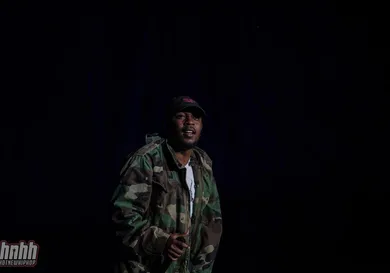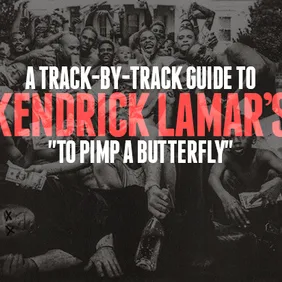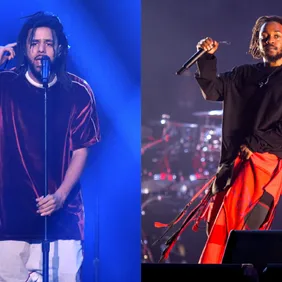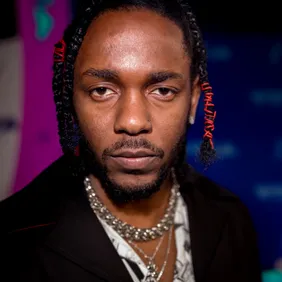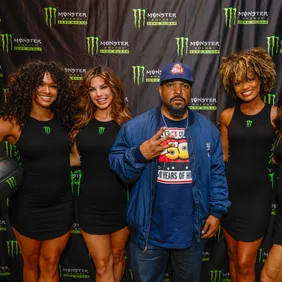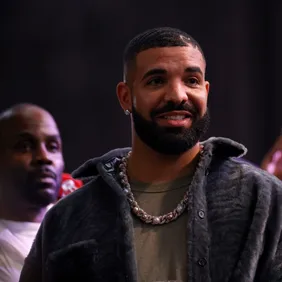After 2013’s wildly successful good kid, m.A.A.d city, Kendrick Lamar had an opportunity that very few artists ever receive. For his third album, he could have continued to make tracks like the wavy “Bitch Don’t Kill My Vibe”, the hook-laden “Fuckin’ Problem", or the festival-banging “m.A.A.d city”, and still had a top-selling album. But instead of recreating music that he’s already conquered, Kendrick set out to make the best work of art possible.
“Art” is defined as something that is created with imagination and that is beautiful or that expresses important ideas or feelings. Have you read a sentence that so perfectly describes To Pimp A Butterfly?
Through a mix of exquisite production and stimulating lyrics, Kendrick has created the kind of masterpiece that will progress culture, the arts, and society as a whole. His content isn’t as accessible as the preceding album, but the world doesn’t need another “Money Trees”. The world needs another Tupac: a poet with bright ideas and the means to reach the youth.
Speaking of Tupac, you probably noticed him in the end there, contextually in spirit form, speaking with our subject. Kendrick recites a poem, “Another Nigga”, that is the basis for the entire album. It provides a summary of the album’s story before Kendrick has a conversation with Tupac’s spirit.
“We ain’t even really rappin’, we just letting our dead homies tell stories for us,” he says in an eerie prediction taken from a Swedish radio show. Kendrick has said in the past that he had an encounter with Pac’s spirit when he was 21. It was an experience that set him on a quest to further the messages Tupac delivered on Me Against The World. (It’s worth noting that Me Against The World celebrated it’s 20th anniversary on March 14th, about a day before this album leaked.)
Throughout To Pimp A Butterfly, Kendrick spreads Pac-like wisdom with an even more pungent delivery. Just like “Young Niggaz”, Kendrick has lyrics meant to skew the youth away from a life of violence and crime. Just like “So Many Tears”, Kendrick contemplates suicide for his listeners to hear. Where the Compton-bred MC differs is in his movie-like delivery. The album, like the last one, paints crystal clear visuals through voices, verses, skits, and setting.
It’s an album of ups and downs for certain, most clearly demonstrated by the polar opposite “u” and “i”. On “These Walls”, Kendrick talks about making love to a woman, only to reveal that the girl is the significant other of the man who killed his friend Dave. His non-sexual desire show a vengeful side of Kendrick that wasn’t really apparent on the “P&P”’s of his earlier days.
“U” sheds some light on what a person who seeks that kind of vengeance may feel on the inside: guilt. Kendrick spends the first half of the song ripping himself apart for not being able to prevent his sister’s pregnancy: "Situation had stopped with your little sister bakin' / A baby inside, just a teenager, where's your patience? / Where's your antennas, where is the influence you speak of? / You preached in front of 100,000 but never reached her.”
In the same song, around the two-minute mark, the beat switches up, and the setting is placed by the voice of a maid. We’re in a hotel room in Europe where Kendrick had his mental breakdown. He practically sobs the following two verses, blaming himself for everything from his friend’s death to California earthquakes. As he becomes intoxicated, he spirals in to the depths of depression, and the listener feels it through a Scorsese-like precision to assign visuals to emotions.
The album also has a large share of religious themes. On “Alright”, Kendrick faces the Devil, referred to as Lucy, short for Lucifer, throughout the album. She attempts to lure Kendrick with material possessions, saying, “What you want, you a house or a car? 40 acres and a mule? A piano? A guitar?” He avoids her, only to meet temptation again on “For Sale? – Interlude”: “Lucy gone fill your pockets / Inside the gi-gantic mansion like I promised / Lucy just want your trust and loyalty / Avoiding me?”
In the rap world, artists often trade money for substance. Riches and sex keep the masses down in the dumps, so Lucy offers the big bucks for rappers who become “boring.” She fills their pockets and promises a good life for their mother. Most of them bite, but Kendrick is different.
It’s clear that Lucy, in this scenario, is also a metaphor for record labels, which also want “boring” because it's what sells. “Lucy got paper work on top of paper work / I want you to know that Lucy got you / All your life I watched you / And now you all grown up then sign this contract if that’s possible," reads like a stenographer got in the room when major labels were courting Kendrick.
“How Much A Dollar Cost” continues the religious commentary while blending it into the surrounding tracks that focus on social issues. In this song, God himself, disguised as a junkie, approaches Kendrick. The track plays into the guilt people feel when denying a homeless man a dollar, and suggests that we care more about our bank statements than our fellow man.
One song prior, “Demo-Crips” and “Re-Blood-licans” are used to demonstrate the similarities of gang-bangers and politicians. Both groups separate themselves by color and spend more time fighting than working together, inevitably ending in the bloodshed. The message is dark, but if you listen critically, it's clear that unity is the only way to break these vicious cycles.
“Complexion” speaks about the human tendency to judge beauty by the color of one’s skin. The song likens the practice to the Willie Lynch theory, a method used by slave-masters to prevent slaves from uniting and uprising. It also welcomes North Carolina’s Rapsody to deliver the only full-verse feature on an album that has already broken Spotify records. She does a killer job in the spotlight.
With a lyrically phenomenal album, Kendrick needed a stellar cast of musicians to back up his sophomore LP, and there was no shortage of tastemakers on To Pimp A Butterfly. The gang did a perfect job of melting G-funk influences with the futuristic Cali-jazz-tronica Flying Lotus and Thundercat have been brewing up. Add a dash of ATLien weirdness, blend into D’Angelo’s funky Black Messiah, and voilà. For a second--or for almost 80 minutes--you might convince yourself music and artistry are coming back in style.
Straight from “Wesley’s Theory”, you get a tasteful mix of retro-funk from George Clinton himself along with futuristic production from Flying Lotus and Thundercat. Thundercat, who is credited for writing five of the album’s sixteen tracks, lays down an incredible bass line while Kendrick opens up the most dense rap project in recent history.
“For Free? – Interlude” is the kind of jazzy slam-poetry that would leave Gil-Scott Heron proud. Even a cut like “Alright”, which scrapes the style of current rap, boasts a killer saxophone solo throughout the entire joint. “King Kunta” and “i” are funky in the purest sense of the word, sampling soul greats James Brown and The Isley Brothers respectively.
Then there are other genius instrumentals like “Momma”, “How Much A Dollar Cost”, and “Mortal Man”. Produced by three separate parties, the songs prove that the blossoming of electronic music has a beautiful space in music. The music on these tracks, and the rest of the album, provide the score for Kendrick’s incredible sequel to good kid, m.A.A.d city.
You can really sink your teeth in to this album, which samples everything from indie greats like Sufjan Stevens and Radiohead to afro-beat pioneer Fela Kuti to the one and only Michael Jackson. The songs offer something new each time you press play, either musically, lyrically, or introspectively. This album makes you think.
It is easy to swim the mainstream. Anyone can pen a verse about riches and women. But art is difficult. It's hard to make an album that encourages you to contemplate religion, society, politics, mortality, and art itself. It's hard to produce a record that blends tasteful influence while keeping an ear to the future. Art is difficult but achievable. A painting that demands its own college courses is art. A movie that, decades later, sparks a two hour conversation is art. To Pimp a Butterfly is art.
